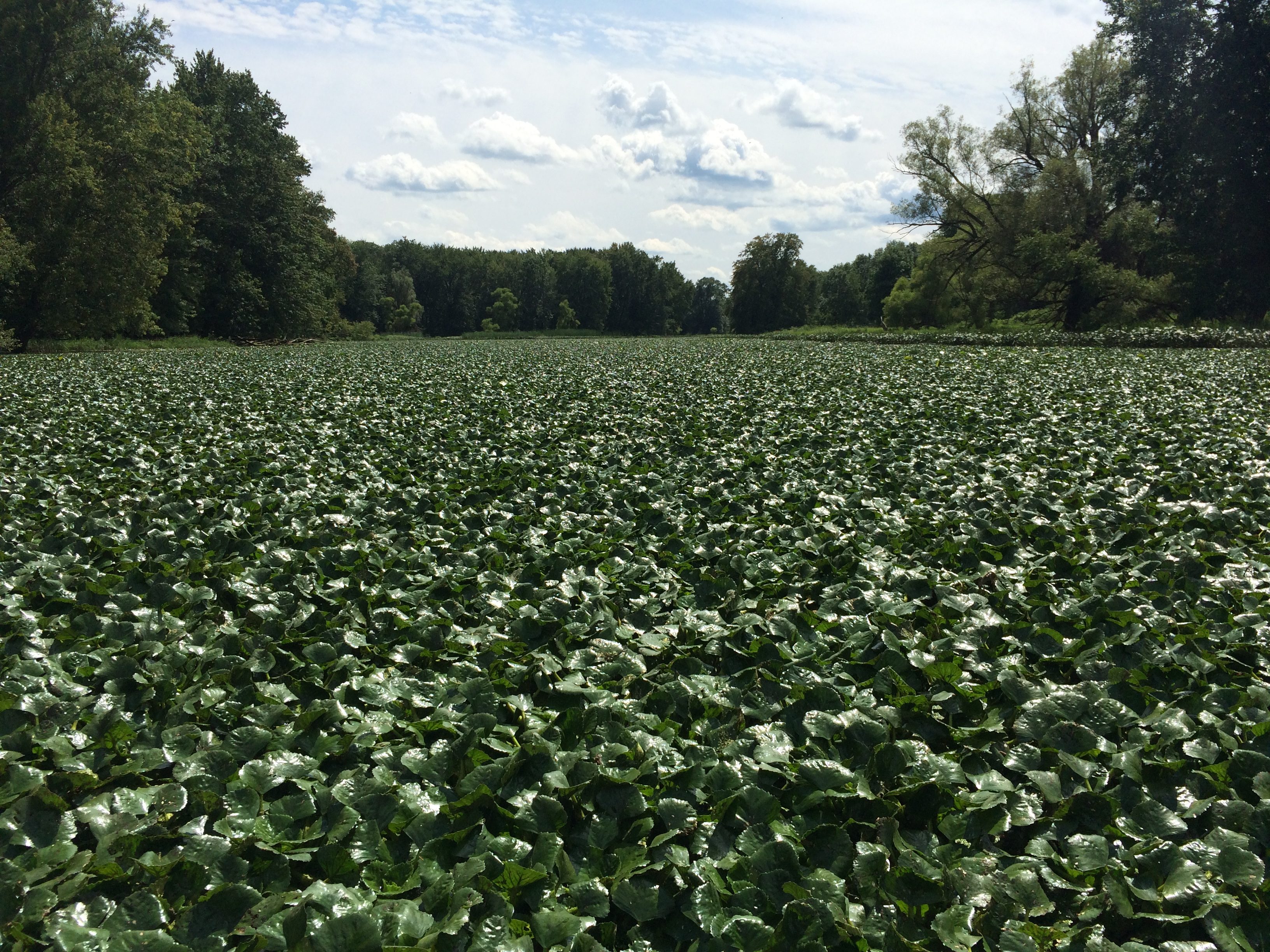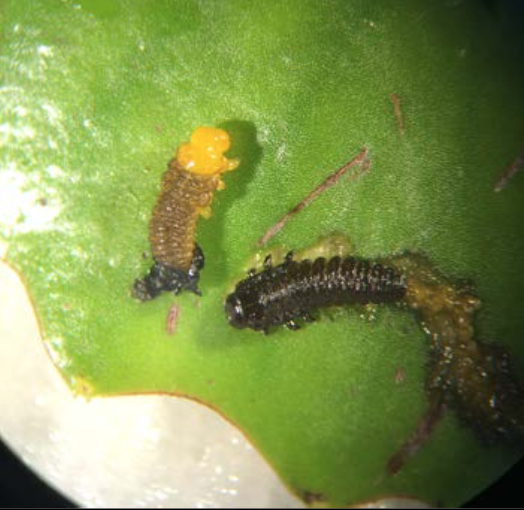
New York Invasive Species Research Institute
Biological Control
Biological control programs are one of the best, and quite often the only, long-term solution to managing invasive plants and animals. In order to be introduced in the state, biological control agents must first be federally approved.
Biological control, or biocontrol as it’s often termed, is a method of utilizing one species to control another. Most often applied in the worlds of agriculture and natural resource management, this strategy offers a more targeted approach to reducing pest populations and mitigating negative impacts than traditional methods. There are a number of different approaches under the umbrella of biological control:
- Classical Biological Control: Bringing natural enemies from an invasive species’ home range and releasing them into the invaded range. This is the most common approach, and requires the most extensive research and permitting process detailed below.
- Augmentation: Identifying natural enemies of a pest that already exist in a system, rearing them, and making augmentative releases to boost agent populations in the wild.
- Conservation: Conserving and promoting the native natural enemies already present in a system to maintain a desirable balance.
The aim of biological control is to introduce or augment co-evolved predators or pathogens of a pest species to a system in order to reduce the negative impact of the target pest species. A biocontrol program is not considered successful unless it is able to do so. Typically, this mitigation of negative impact is mediated by a biocontrol agent decreasing abundance, reproductive output, or vigor of the pest species on the landscape. Agents act to maintain pest populations at a lower level, however they will never eradicate a pest species completely. Once a biocontrol agent has been released, follow-up experiments by researchers are essential to track survival and impact on the target species, and promote establishment of agents.
As with all management actions, there are risks that go along with biological control programs. Examples of early “biological control” efforts, including the famous Cane Toad of Australia, showcase the devastation that can occur when organisms are not properly screened before introduction. Regulations and rigorous tests required today are designed to minimize the risk of non-target impacts, and organisms that are approved for release are typically highly specialized and share a deep evolutionary history with the target pest. Notably, biocontrol programs typically target pests that are widespread and have few effective management options. For this reason, in New York State, invasive species managers have continually voiced support for these initiatives. Where successful, biological control programs can save managers and growers an immense amount of time, effort, and resources, and serve as a sustainable long-term solution to pest issues.



